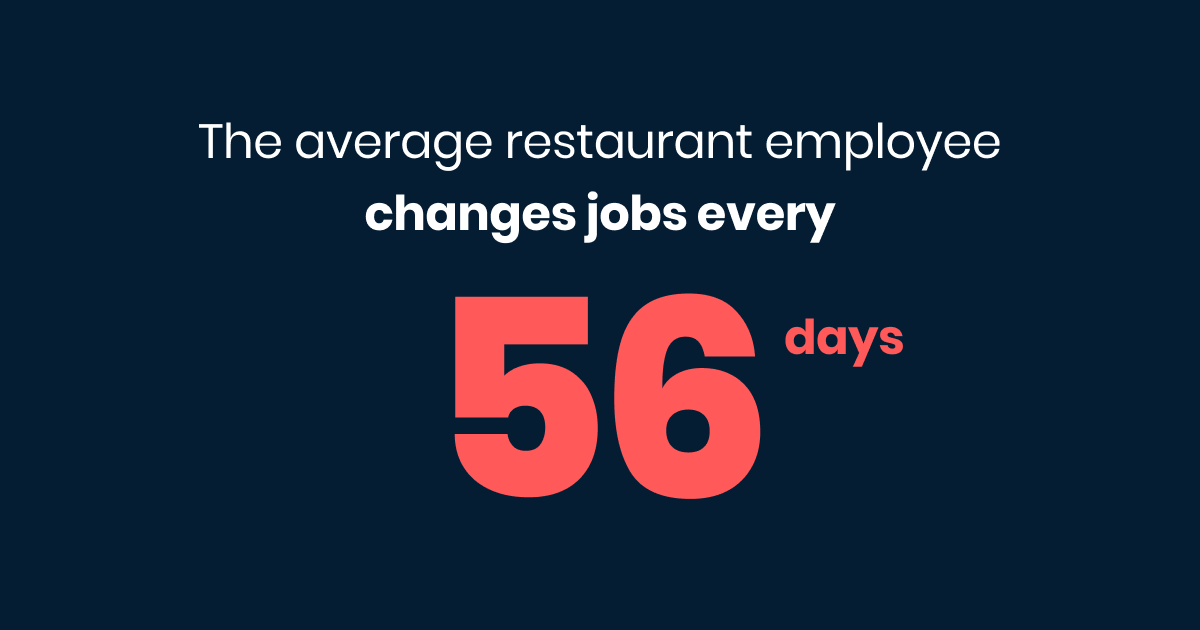While restaurateurs are rejoicing that sales have returned to pre-pandemic levels, many who were recently surveyed indicate that their restaurants lack staffing to meet on-premise dining levels during the summer months. The upcoming months and Holiday season will likely not provide any relief for already staff-strapped restaurant owners and managers.
Let’s take a deep dive into today’s wild west of restaurant staffing and how technology solutions can help mitigate its ripple effects.
Why are restaurants short-staffed?
While restaurant staffing challenges are certainly not anything new, they have been exacerbated by the lockdowns caused by the global pandemic and the ensuing “Great Resignation.” Many industry pundits point to the fact that repeated business closures, furloughs and layoffs incited restaurant workers to rethink their careers. Some left the field altogether. Others opted for new jobs that paid better wages, offered more benefits, and provided more balanced work hours.
Pandemic epiphanies aside, several experts in the restaurant industry point to the fact that COVID-19 “simply” shed light on an already festering problem: restaurant workers felt underpaid, lacked a clear career path, and felt that job flexibility, lucrative benefits and other perks were unattainable.
How have restaurants handled their staffing shortage? Tactics include limiting their menu options, reducing opening hours, limiting dining capacity, and cross-training staff.
Want the best of both worlds?
Find out how UEAT HUB enables you to sell directly to customers and efficiently take advantage of food delivery apps. No extra labor or tablets required.
Restaurateurs must maximize the use of recruitment methods
Time is money, as the old adage goes. And this certainly rings true for busy restaurateurs who are under the gun to improve margins, operations and both staff and customer satisfaction. Restaurant staffing shortages are indeed top of mind, but it can be extremely difficult for owners and managers, who are already spread thin, to dedicate time to recruiting new employees.
Let’s face it, in today’s social media generation and tight labor market, gone are the days restaurateurs could rely on a HELP WANTED sign to attract droves of potential candidates. Gone are also the days when a restaurant operator could simply post a job in a newspaper or online to find new hires.
Recruiting the next generation of restaurant employees requires a multi-pronged, tech-savvy, and strategic approach that restaurateurs cannot relegate to just a few minutes each week, especially if they are not part of a chain that has an active and forward-thinking HR team.
Some additional actions restaurateurs can take are:
- Post jobs on multiple sites, including those tailored to the hospitality industry, including RestoJobs, HospitalityJobs.ca and Poached
- Monetize candidate referrals from current employees and customers (aka: referral programs)
- Participate in local internship programs with culinary and vocational schools
- Continuously train management teams to value employees
- Participate in charity events and local media initiatives to raise brand awareness
- Leverage different social media platforms, such as Facebook, Instagram and TikTok, by regularly posting jobs and promoting your work culture
- Take part in hiring fairs—even if they are not dedicated to the restaurant industry
Remember, though, that recruitment is only half the battle. Retaining employees is equally important. Did you know that the average restaurant employee changes jobs every 56 days? Employee turnover costs in the restaurant industry average nearly $6000! This is often caused by restaurateurs hiring too fast in order to fill open positions. The problem resides in an ill fit between a new employee (even if they are experienced!) and the business’ environment, team, values and mission. Dedicate at least 50% of your HR time to ensuring that your existing team members are happy and motivated.

Finally, always be recruiting. Don’t stop searching for additional staff because you’ve had a steady few weeks with no staffing problems. Start recruiting at least 6 months in advance for peak sales periods, such as the Holidays, Spring Break and summertime.
Can technology help restaurant staffing issues?
Often deemed as a solution to optimize operations, technology is also coming to the aid of restaurants grappling with limited staff.
For one, first-time candidates and employees who have grown up with technology prefer working for businesses that have embarked on a digital transformation. For example, 80% of Gen-Zs want to work with cutting-edge technology—and while choosing employment, they will select companies that are willing to think outside the box and adopt new tactics to improve work methods, collaboration and even customer service.
Furthermore, technology solutions can actually provide some much-needed relief to both front and back-of-the-house employees. This is especially true for restaurant automation that minimizes human labor. Here are some top innovative ideas to use technology for restaurant staffing purposes:
- Invest in the best restaurant scheduling software: Depending on your needs and budget, restaurant scheduling software helps you to better manage your workforce’s schedules, providing employees with up-to-date information on schedule changes, shift availabilities, etc. You can even communicate with staff via some platforms so that they are notified about important work information by text or email. This frees up substantial time for managers.
- Consider reservation and inventory management software: Reservation software can drastically reduce the time your front-of-the-house staff wastes answering telephone calls. Inventory management software banishes the need for kitchen employees to manually take stock of inventory levels, enabling them to be dedicated to preparing food rather than administrative tasks.
- Eliminate the order chaos from online apps: When a restaurateur decides to use multiple sales channels to boost takeout and delivery sales, it can be quite hectic for staff during rush times. A case in point? Third-party delivery apps require that front-of-the-house teams manage multiple pinging tablets—and often require the manual entry of orders into POS systems. Online ordering aggregators, like UEAT’s HUB, provide an effortless way for restaurants to receive online orders from their third-party delivery apps and own websites right into their POS and kitchen display systems.
- Align your online ordering capabilities to your restaurant’s capacity: Online ordering through marketplaces or your own online ordering platform is great for generating additional sales. However, the last thing you want is to over-burden your staff because of extra orders. Some restaurant online ordering platforms actually allow you to limit your capacity during pre-specified times or based on inventory levels. Let’s say you have a promotion whereby customers can order a 2 for 1 online. You can limit the number of orders of this promotion to targeted hours or quantities. In just a few clicks, you can also remove menu items if you’re missing ingredients or if the recipe is complicated enough that it’s slowing down your chef and line cooks.
- Help your waiters and greeting staff focus on customer service. Nothing is worse for a restaurant patron that observing a stressed-out waiter or receptionist. For on-premise dining, consider contactless self-serve ordering and payments. Customers can order and pay at their convenience—while waiters can spend their time doing what they love best: putting smiles on customers’ faces and stoking loyalty. Online ordering can also reduce the number of phone calls restaurants receive for delivery, curbside pick-up and takeout. Again, with online orders being sent directly to the kitchen through the integration of an online ordering platform and POS, restaurants can concentrate on the guest experience.
Want the best of both worlds?
Find out how UEAT HUB enables you to sell directly to customers and efficiently take advantage of food delivery apps. No extra labor or tablets required.
Restaurant staffing hurdles will not end anytime soon. It takes grit and ingenuity to deal with a highly competitive labor market and revamp the perception of restaurant jobs. Apart from compensation, benefits and culture, restaurateurs must develop agile strategies in order to streamline operations and alleviate the stress caused by a restricted number of employees. Advanced online ordering and self-serve systems are critical to off-loading staff and keeping customers happy.

Subscribe to our newsletter for the latest insights in restaurant management
By clicking the button above, you agree that UEAT will use your information to contact you about relevant products, content and events. You can unsubscribe from these communications at any time. For more information, see our Privacy Policy.



